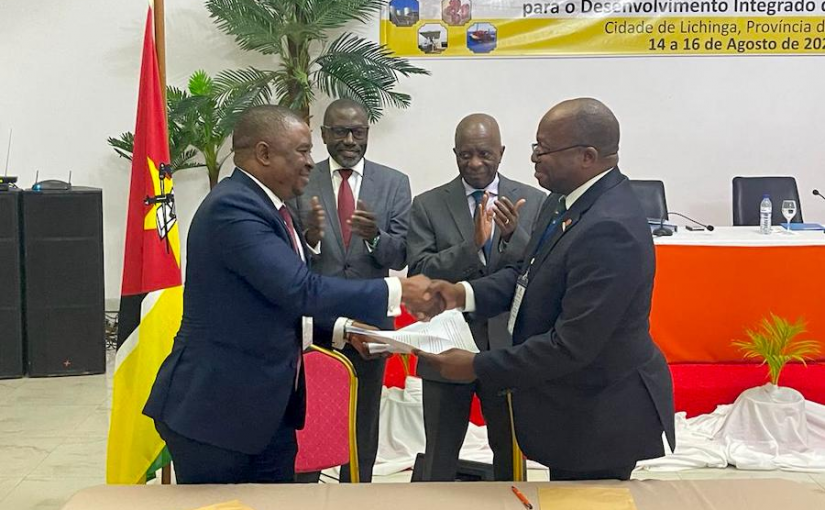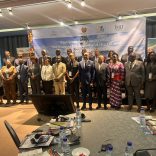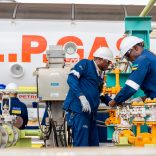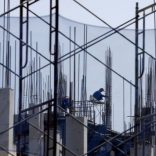Mozambique: EDM wants to ensure power supply in anticipation of industrial production needs
Mozambique’s EDM, HCB agree on funding Mphanda Nkuwa hydropower project

The agreement was signed by the CEOs of HCB, Tomás Matola, and EDM, Marcelino Alberto. The ceremony was attended by the Minister of Mineral Resources and Energy, Carlos Zacarias, representing the Government of Mozambique and other members of the management bodies of the two companies. [Photo: Notícias]
- Mozambique’s electricity company EDM and Hidroelectrica de Cahora Bassa (HCB), the firm that operates the Mphanda Nkuwa Hydroelectric Project, have signed an agreement on the allocation of more than 3 million U.S. dollars in funding.
Eletricidade de Moçambique will advance three million dollars to the Mphanda Nkuwa hydroelectric dam project, which will be the second largest and which it is developing in the centre of the country with the Cahora Bassa hydroelectric dam, it announced on Friday.
The two companies announced that they had signed a mutual contract agreement on Wednesday that establishes the terms and conditions for the provision of an amount “of just over $3 million” (€2.8 million) to the budget of the Mphanda Nkuwa Hydroelectric Project Office (GMNK).
“This amount corresponds to EDM’s [Electricity of Mozambique] contribution (…) and should be paid by the financial closure of the project,” explains the state company.
The development costs of the Mphanda Nkuwa Hydroelectric Project are borne by EDM and Hidroelétrica de Cahora Bassa, “companies mandated by the government to develop and implement” the project, and “should be accounted for as advances to the share capital of the special purpose companies to be set up” for its development.
Mphanda Nkuwa will be the second largest hydroelectric plant in the country, after the Cahora Bassa Hydroelectric Plant (HCB), which has a capacity of 2,070 megawatts. It will have an installed power generation capacity of up to 1,500 megawatts and a 1,300-kilometre high-voltage line from Tete to Maputo.
At an estimated cost of $4.5 billion (€4.2€ billion), Mphanda Nkuwa is to be built 61 kilometres downstream from the Cahora Bassa hydroelectric plant on the Zambezi River in Tete province.
“The project will be the lowest cost option for energy production” and should strengthen Mozambique’s position in the energy export area as a “regional energy hub”, the GMNK previously emphasised.
Domestically, it aims to “contribute to universal access and industrialisation” in the country, he added.
The European Union (EU) and the European Investment Bank (EIB) announced in June that they “will disburse 500 million euros” for the Mphanda Nkuwa dam hydroelectric project.
A total of €300 million will go towards the high-voltage power line – of which €50 million is a donation – and the remaining €200 million will go towards the hydroelectric power station.
The announcement came just a few days after the Mozambican government announced that a consortium led by Electricity of France (EDF) and including oil company TotalEnergies had been chosen as the “preferred bidder” to implement the project under a concession regime.
This will be followed by the fundraising phase until the financial close is reached (initially scheduled for August 2024), at which point the project is deemed to have the funds it needs to go ahead and start operating by 2030.
“The Mphanda Nkuwa project will be fundamental to the process of energy transition and decarbonisation in the southern region of the African continent,” the developer’s office said.












Leave a Reply
Be the First to Comment!
You must be logged in to post a comment.
You must be logged in to post a comment.